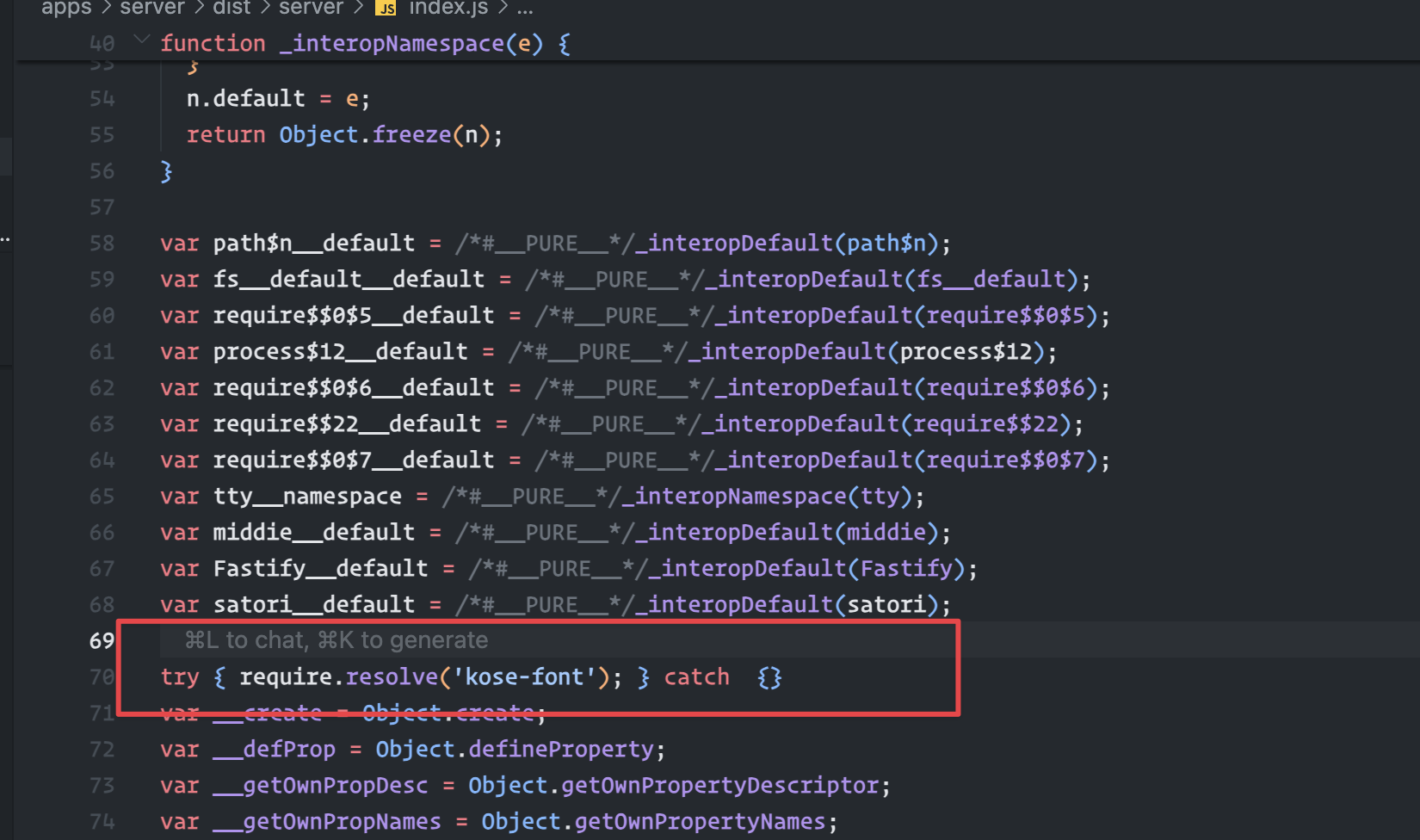这篇文章是实现 Follow 的 Separate main application and external pages and SEO support 这个 PR 的一部分技术细节,由于其中的技术细节较多,所以这将是系列文中的一篇。
用过 Next.js 的同学应该都知道,Next.js 自带了 ImageResponse 方法,可以用来生成 OpenGraph Image。
如果我们服务端框架不使用 Next.js,那么我们也可以使用 Vercel 提供的 @vercel/og 或者 satori 库来生成 OpenGraph Image。
vercel/og 是对 satori 的封装,使用起来更简单。但是这里我们使用 satori 来实现。
这一篇文章会介绍如何使用 satori 生成 OpenGraph Image,如何处理远程图片,字体,然后如何正确编译,最后部署到 Vercel 上。
初始化项目
起步
我们使用 Fastify 作为基座服务,其中一个接口去处理 OpenGraph Image 的生成。
创建一个 index.ts 文件,写入以下内容:
创建 lib/load-env.ts 文件,加载环境变量:
[!NOTE] 注意此项目不要使用 ESM,在
package.json中不需要设置type: module,否则后续部署到 Vercel 会可能会出现不可预见的问题。
安装 tsx 使用 tsx watch index.ts 启动项目,方便调试。
路由初始化
我们使用 /og 路由处理 OpenGraph Image。
首先安装 satori 库:
创建 routes/og.ts 文件,写入以下内容:
在 index.ts 中引入:
封装 satori
satori 没有 @vercel/og 那么方便,需要我们自己再次封装,比如引入字体,生成 PNG 图片等。
引入字体
如果 OG Image 中存在字符,我们首先需要引入至少一种字体作为默认字体,如果需要显示中文,则需要引入中文字体。
这里我们使用小赖字体。安装字体:
创建一个 lib/log/font.ts:
编写一个 renderToImage 方法,使用 resvg 生成 PNG 图片:
要使用 JSX 的方式去表达 OG Image,还是需要安装 react 的。
现在可以在 routes/og.ts 中使用 renderToImage 方法了。

效果
引入图片
和 @vercel/og 不一样的是,在 satori 中的 <img /> 不接受传入 arrayBuffer 作为 src,只接受一个合法的可达的图片(非 SVG)的链接或者 base64 如果图片不可达或者图片格式不支持,则会导致 OG Image 生成失败,导致报错。
为了保证链接合法性和图片的可访问性,我们可以封装一个方法专门去获取图片,如果图片不可达则使用 fallback 图片。
上面的方法会首先去访问图片,如果图片不可达,则返回 null。如果链接可达,并且是合法的图片则编码为 base64 返回,使用这种方法还可以正确渲染 SVG 图片。

图片效果
部署到 Vercel
预备知识
Vercel 是一个 Serverless 平台,并不支持常驻服务,所以需要使用 Vercel 提供的 API 路由来部署。
开始之前,我们想要了解 Vercel API 是如何工作的。
当项目中存在 api 目录,Vercel 在构建项目时会自动识别并编译 api 目录中的文件,然后挂载到 /api 路由下。
在项目构建时,Vercel 会优先执行你设置的 build 指令,然后再使用 @vercel/node 去编译 api 目录中的文件。
编写 API 路由
首先我们需要在项目根目录新建文件夹 api,然后在里面新建 index.ts 文件,写入以下内容:
dist 是项目编译后的文件夹,index.js 是项目入口文件。这个文件在没有编译的情况下是不存在的,所以需要我们手动编译。
安装 tsup 去编译:
写入 tsup 配置:
现在就可以使用 tsup 去编译项目了:
Vercel 创建项目
我们可以使用 Vercel CLI 在本地构建看看输出文件,开始之前首先需要在 Vercel 上创建一个项目,并且已经和 Vercel CLI 关联。
在 Vercel 中项目中,build 指令填写:
现在可以使用 vercel build 预览 Vercel 的构建结果了。
解决字体文件缺失
在 output/functions 目录下会 API 编译后的文件。
继续追踪 node_modules 目录,会发现缺少了 kose-font 这个依赖。导致 OG 没有找到字体报错。
回想一下,我们是通过 require.resolve 去获取字体文件的,经过 tsup 编译之后变成了 __require.resolve(), __require 是 tsup 转换后的 require 导致 @vercel/node 在编译的时候没有正确识别这个需要的依赖,从而被舍弃了。
那么,只要我们注入原始的 require.resolve('kose-font') 就可以解决这个问题了。为了保证 tsup 不转换,我们可以提前注入原始代码块。
修改 tsup.config.ts 文件:

kose-font 被打包了

是因为这里注入了原始 require.resolve 代码
现在,项目可以部署到 Vercel 了。
API 重写
Vercel API 默认都是以 /api 作为前缀,而我们希望以 /og 作为前缀,所以需要重写 API 路由。
根目录建立 vercel.json 文件,写入以下内容:
这样,所有的请求都会被重写到 /api 路由下。
大功告成。